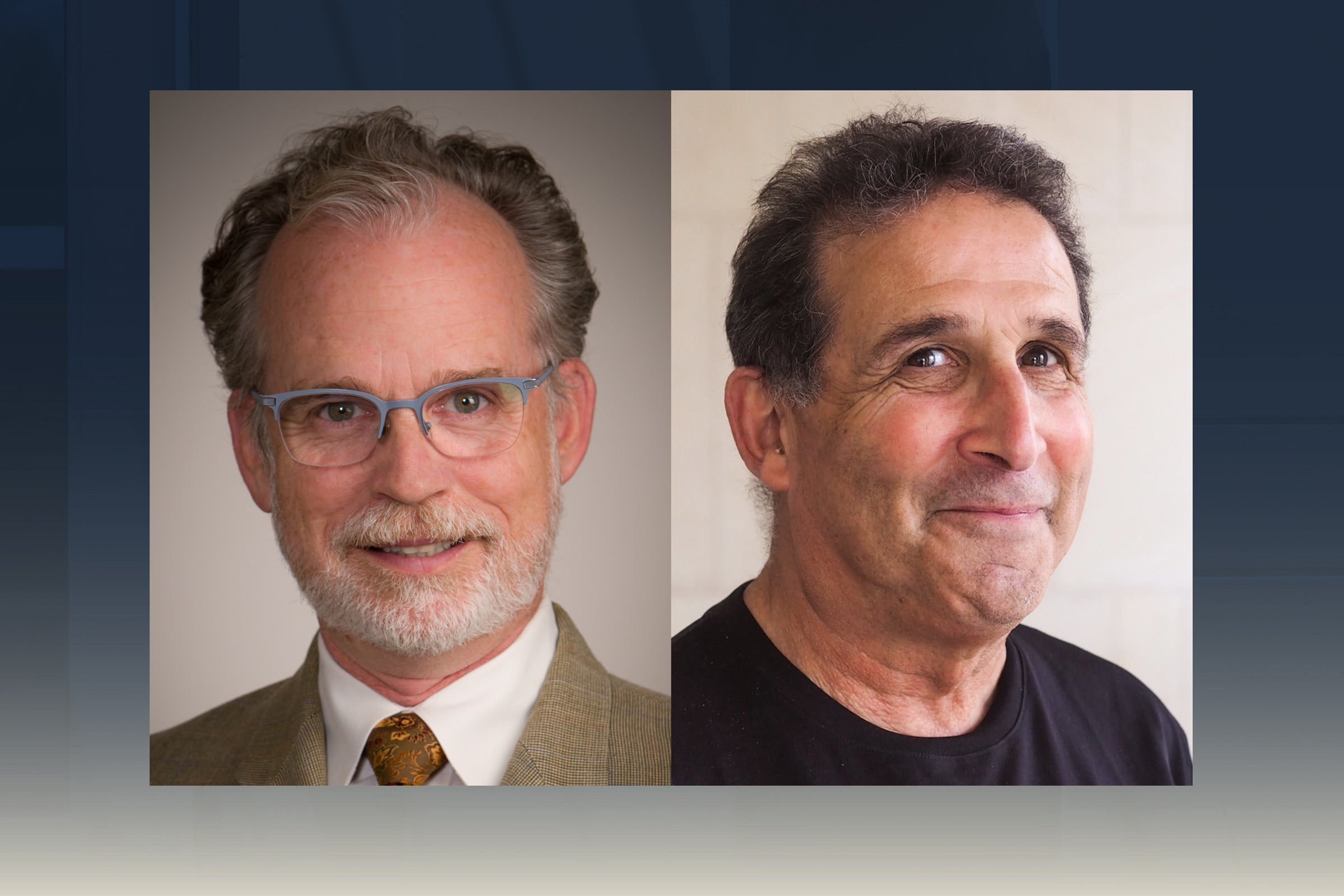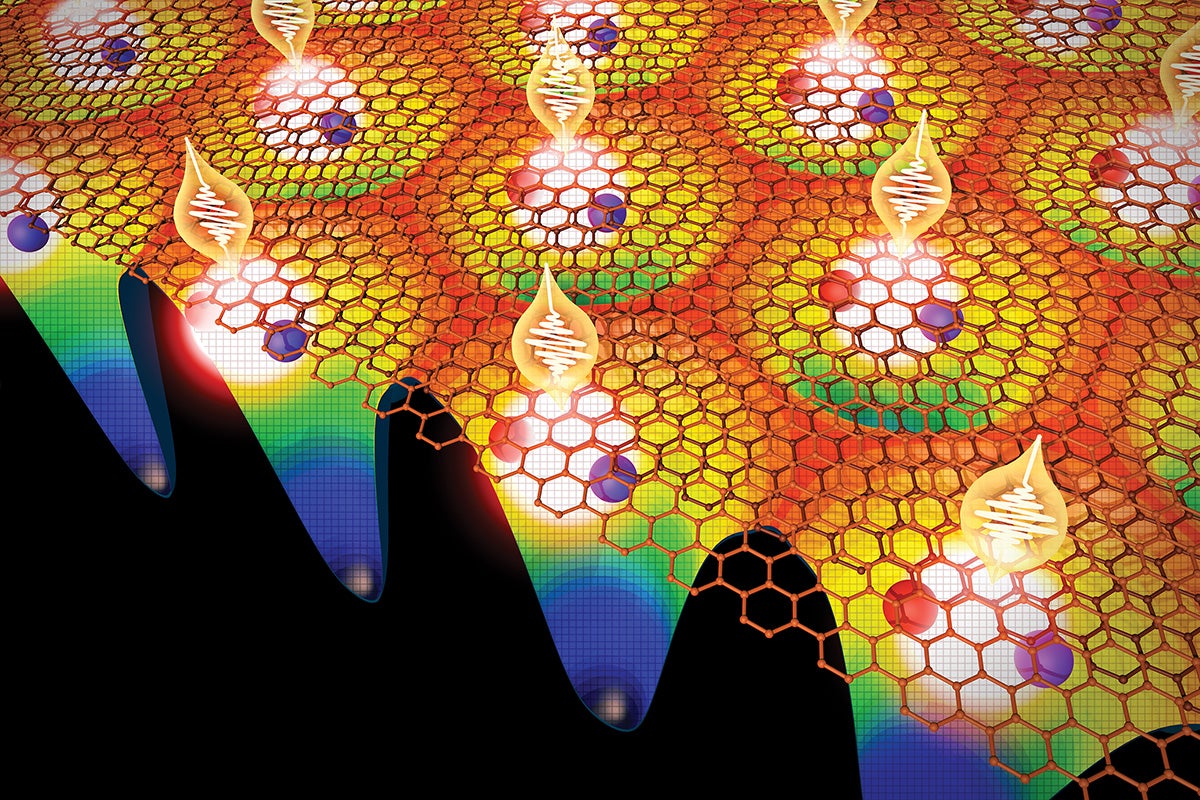The Department of Chemistry and Biochemistry is pleased to welcome Dr. Xiaoyang Zhu, who will be joining the faculty this spring. Dr. Zhu received a BS from Fudan University in 1984 and a PhD from The University of Texas in 1989. He is a 2006 recipient of the Friedrich Wilhelm Bessel Award, and a 1996 recipient of the Cottrell Scholar Award.
More about Dr. Zhu's research program:
Exciton dissociation and solar energy
One of the key questions we are focusing on is at the heart of future photovoltaic technology: How can one extract electrons and holes from photo-generated excitons in organic semiconductors or inorganic quantum dots? To answer this question, we use model interfaces for organic and quantum dot solar cells and state-of-the-art laser spectroscopic techniques, including femtosecond time-resolved two-photon photoemission spectroscopy (2PPE) and time-resoved second harmonic generation (SHG). As examples, recent discoveries in our lab showed for the first time how an electron and a hole is bound by the Coulomb potential across an organic semiconductor interface and how one can extract hot electrons from a photoexcited PdSe quantum dot.
Charge transport and organic electronics
Charge carrier generation and transport are central to the operation of all organic electronic and optoelectronic devices, such as organic light-emitting diodes (OLEDs), field effect transistors (OFETs), and photovoltaic cells (OPVs). A fundamental distinction from their inorganic counter parts is the localized nature of charge carriers in organic semiconductors. We apply in situ optical spectroscopy to directly “see” inside operating devices. This spectroscopic approach allows us to quantitatively establish the nature of charge carriers in organic and polymeric semiconductors. Recent highlights include quantitatively distinguishing electrostatic from electrochemical doping mechanisms and understanding the Mott insulator-to-metal transition in gate-doped polythiophene.
Chemical control of bio-interfaces
Interfacing manmade materials to biological systems is a common challenge to a number of important fields, including biomaterials, biosensors, microarrays, and nanomedicine. We are designing surface chemistry to rationally control such interfaces and probing these soft interfaces using physical tools, such as interfacial force microscopy. Recent highlights include the development of surface chemistry which optimizes the activity of immobilized proteins and allows the “digital” switching of this activity. Another design has led to the successful fabrication of a fluidic and air-stable supported lipid bilayer; this can be the basis for cell mimicking microarrays in high throughput studies, e.g., the screening of nanomedicine targeting cell surface receptors.
Representative publications:
M. Muntwiler, Q. Yang, W. A. Tisdale, X.-Y. Zhu, “Coulomb barrier for charge separation at an organic semiconductor interface,” Phys. Rev. Lett. 101 (2008) 196403.
Y. Deng, et al. “Fluidic and air-stable supported lipid bilayer and cell-mimicking microarrays,” J. Am. Chem. Soc. 130 (2008) 6267-6271.
M. Muntwiler, X.-Y. Zhu “Formation of two-dimensional electron polarons that are absent in three-dimensional crystals,” Phys. Rev. Lett. 98 (2007) 246801.
L. Kaake, et al. “Vibrational spectroscopy reveals electrostatic and electrochemical doping in organic thin film transistors gated with a polymer electrolyte dielectric,” J. Am. Chem. Soc. 129 (2007) 7824 - 7830.
Y. Deng, X.-Y. Zhu “A nano-tumbleweed: breaking away a surface tethered polymer molecule by noncovalent interactions,” J. Am. Chem. Soc. 129 (2007) 7557-7561.
B. Holtz, Y. Wang, X.-Y. Zhu, Athena Guo, “Denaturing and refolding of protein molecules on surfaces,” Proteomics 7 (2007) 1771-1774.
X.-Y. Zhu, et al. “Molecular quantum well at the C60/Au(111) interface,” Phys. Rev. B 74 (2006) 241401(R).
R. Major, J. E. Houston, M. McGrath, I. Siepmann, X.-Y. Zhu “Viscous Water meniscus under nano confinement,” Phys. Rev. Lett. 96 (2006) 177803.
Y. Deng, X.-Y. Zhu, T. Kienlen, A. Guo “Transport at the air/water interface is the reason for rings in protein microarrays,” J. Am. Chem. Soc. 128 (2006) 2768-2769.
News and Highlights
From the Chemistry Department









